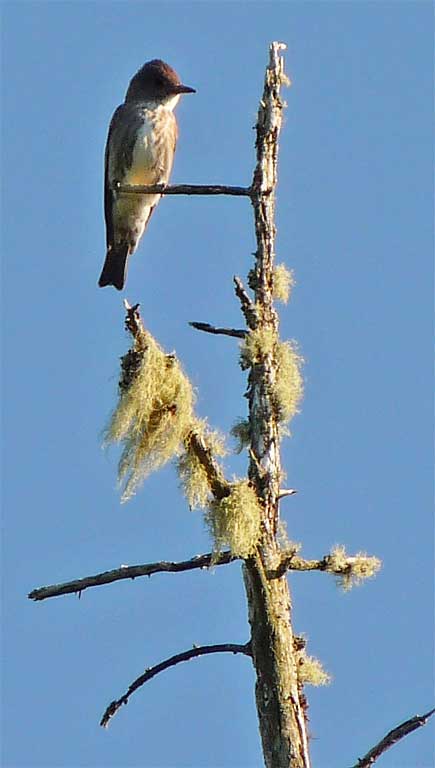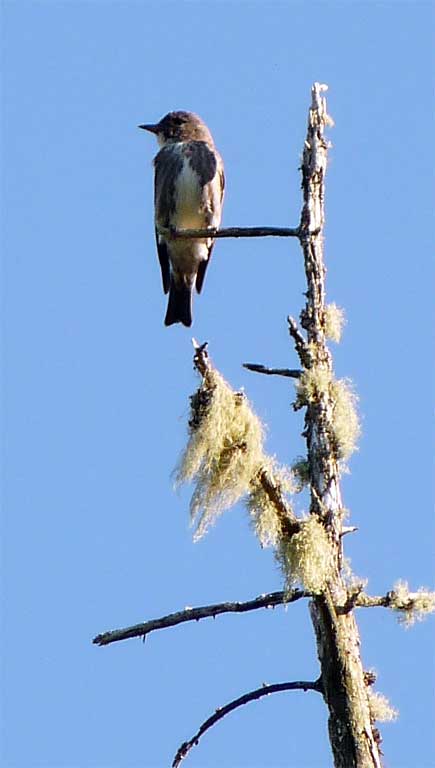  |
Olive-sided Flycatcher: A welcome summer resident on the WoodensI spotted and heard an olive sided flycatcher on a couple of days in early July. It is one of 30 bird species that are yellow or red listed in Nova Scotia, so it's heartening to see it on the Woodens. It winters in the Andes from Panama to Bolivia.About this bird, Robie Tufts wrote: On his return in spring, the male selects a territory for nesting and all rivals are immediately challenged. Sitting on the topmost dead branch or the highest tree in his little kingdom, with an unobstructed view in all directions, he remains alert and upright, like a sentinel on duty, for hours at a time. During the nesting period the male is practically never absent from his chosen domain. His clear, whistled call, which permits several equally euphonic translations, can be heard far off as he orders his listener with come right-here or quick more-beer. There is the story of a trapper in the back country who, finding his bear trap empty, claimed he was taunted by a very impudent bird perched overhead that kept jeering at him with what no-bear. The first word is shorter and weaker than the other two where emphasis is placed, and the final note is usually drawn out and slurred downward.From a Species at Risk document: Olive-sided flycatchers are found throughout Nova Scotia but it dwindling numbers… They are found in early post-fire landscapes or clearings, and like to perch on the tops of tall trees or snags, from which they take off to catch flying insects. They have a preference for coniferous forest edges, and openings like meadows, rivers, bogs, swamps, and ponds. More About Olive-sided Flycatcher
Please report interesting observations on wildlife in the Woodens River watershed, on The Bluff Trail or in Five Bridge Lake Wilderness Area. (Some sites will be in all three.) Send those to wrweo@yahoo.ca. |